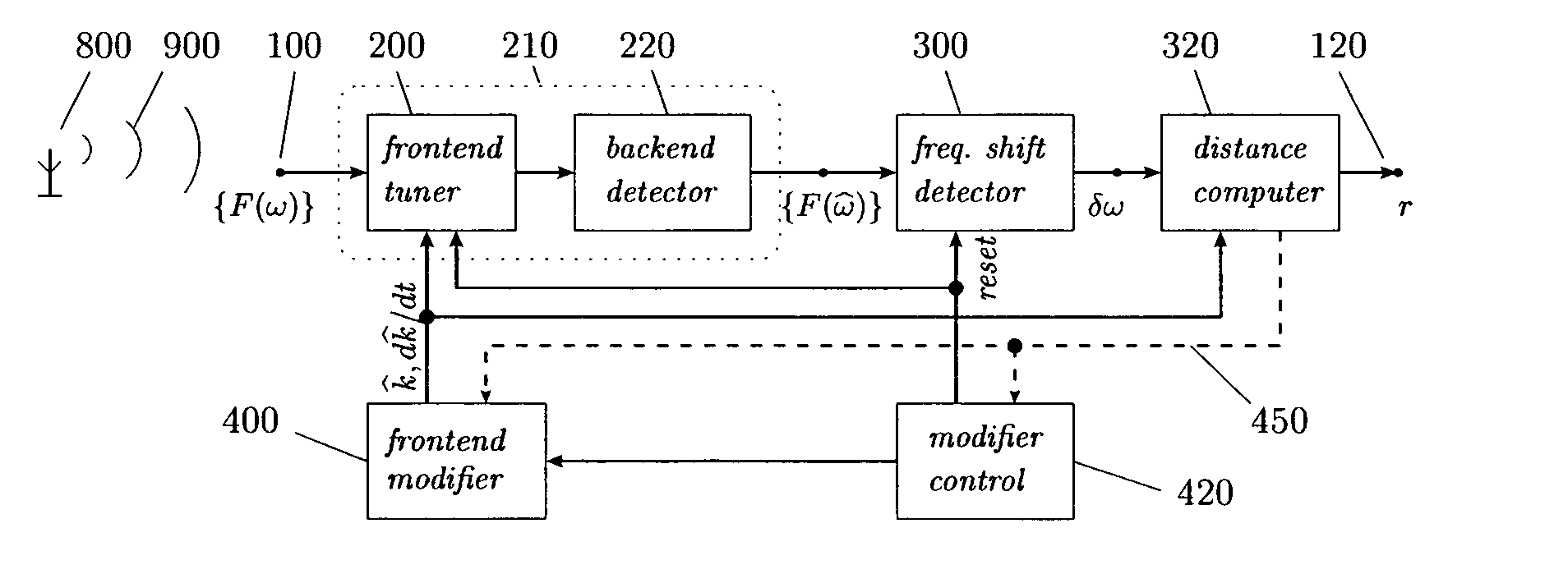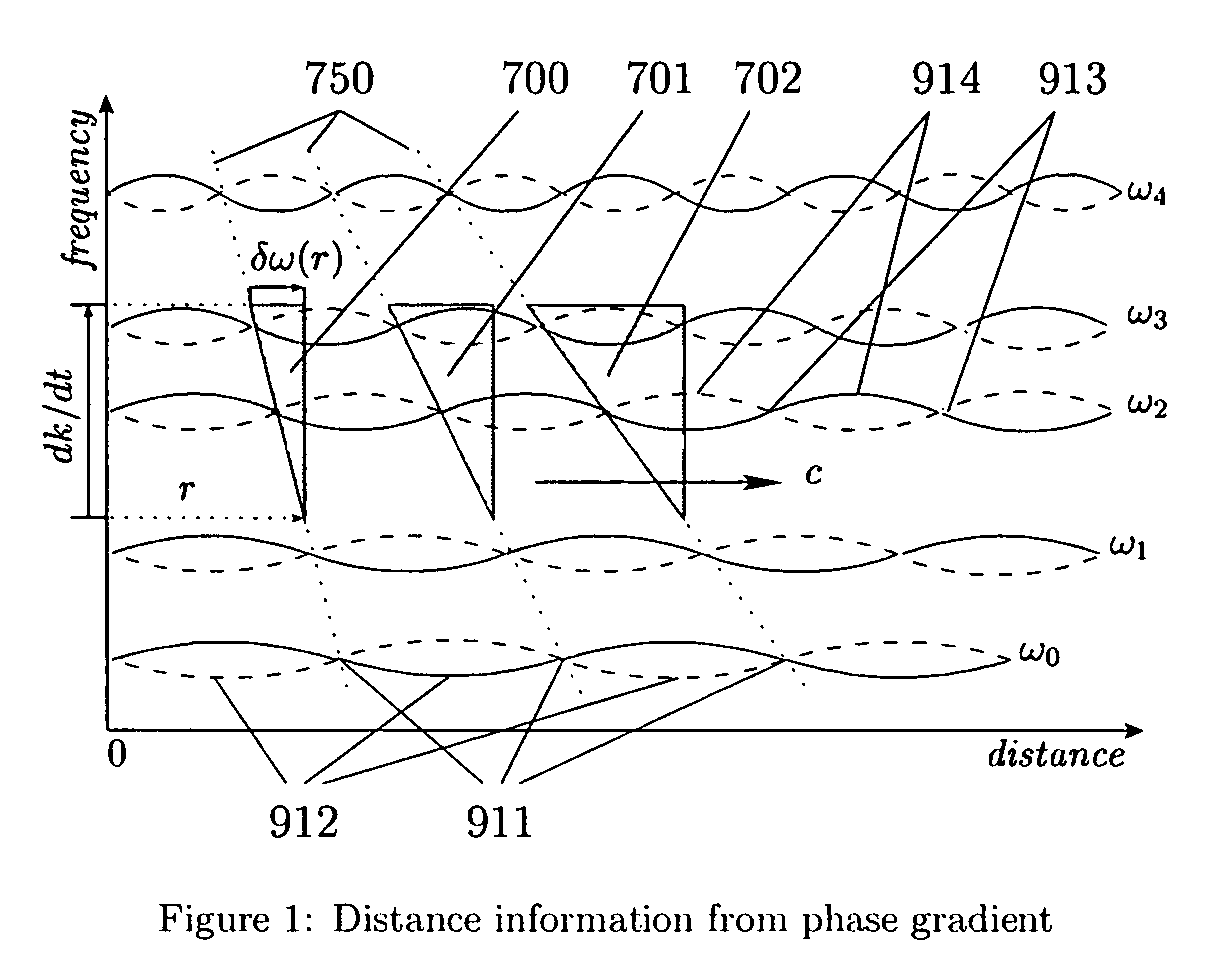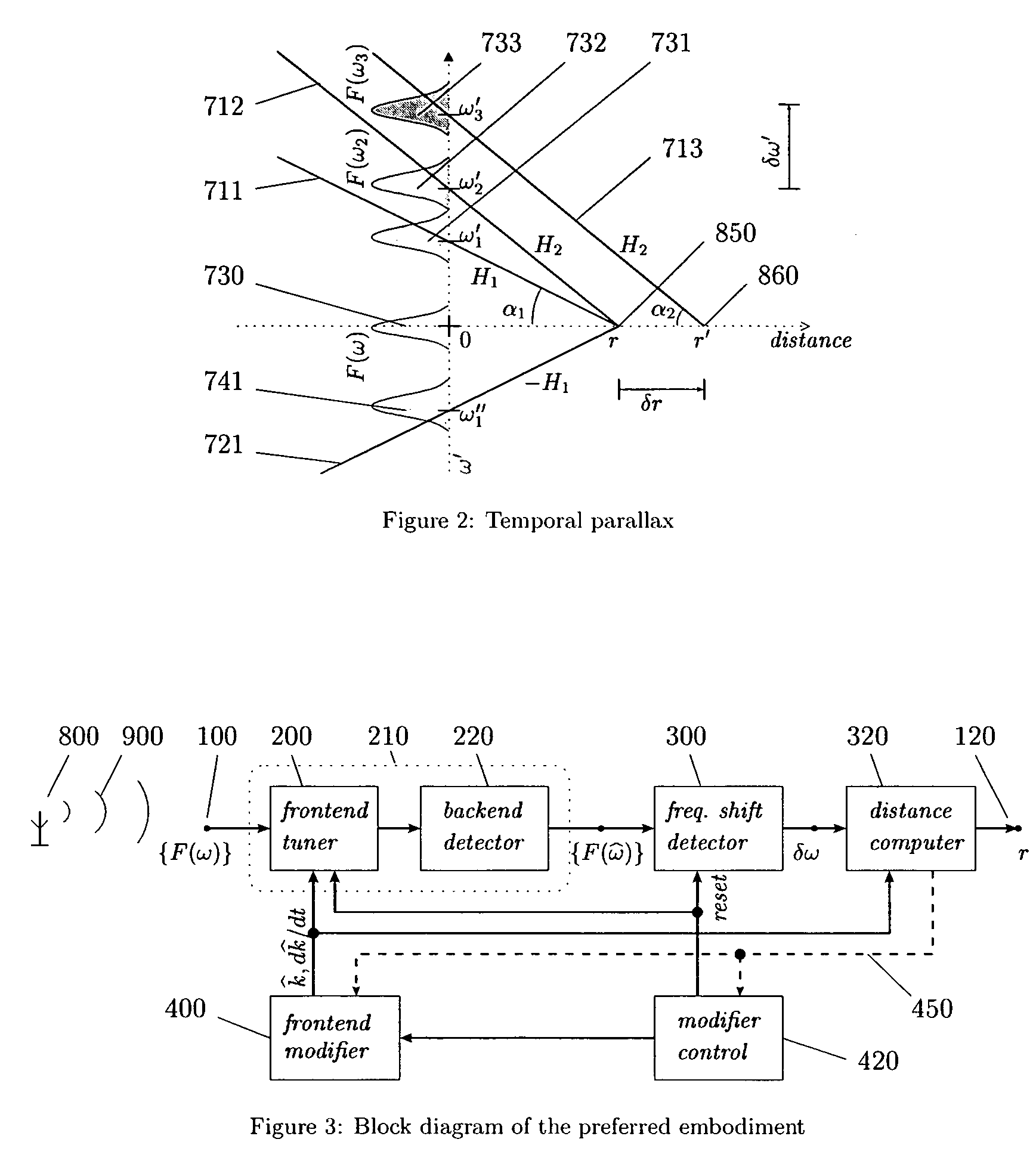Passive distance measurement using spectral phase gradients
a spectral phase gradient and distance measurement technology, applied in distance measurement, instruments, surveying and navigation, etc., can solve the problems of affecting the accuracy of spectral phase gradients, and the inability to detect the spectral phase gradient accurately, so as to avoid the dependence on a reference illumination, simplify both active and passive radar systems, and improve the accuracy
- Summary
- Abstract
- Description
- Claims
- Application Information
AI Technical Summary
Benefits of technology
Problems solved by technology
Method used
Image
Examples
Embodiment Construction
[0105]The invention is described in detail below, beginning with graphical explanations of the notions of phase gradients and temporal parallax, and of the core principle of the inventive procedure, followed by specification of the preferred embodiment, description of its operation and sample calculations for selecting β. Application of the embodiment to receivers using resonant cavities and tuned circuits, diffraction gratings or refraction, and sampling and computation of the spectra is discussed in that order, showing how the inventive frequency shift z results in each case to reveal the target distance r, per equation (1). Lastly, practical considerations and implications to physics are briefly discussed, in order to ensure sufficient understanding of the invention to enable its utilization in diverse forms and applications by those skilled in the related arts.
A. Principle of the Invention
[0106]The principle of the invention is best illustrated by the graph in FIG. 1 showing how...
PUM
 Login to View More
Login to View More Abstract
Description
Claims
Application Information
 Login to View More
Login to View More - R&D
- Intellectual Property
- Life Sciences
- Materials
- Tech Scout
- Unparalleled Data Quality
- Higher Quality Content
- 60% Fewer Hallucinations
Browse by: Latest US Patents, China's latest patents, Technical Efficacy Thesaurus, Application Domain, Technology Topic, Popular Technical Reports.
© 2025 PatSnap. All rights reserved.Legal|Privacy policy|Modern Slavery Act Transparency Statement|Sitemap|About US| Contact US: help@patsnap.com



